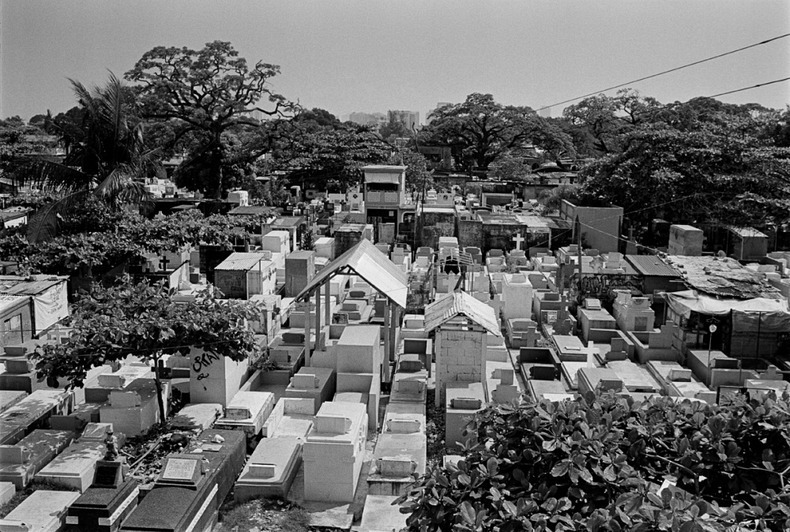Housing is such scarce in the Filipino capital of Manila, that thousands of residents have found an alternative to their housing woes by making the cemetery their home.
Metro Manila is a bustling city with a population of around 12 million. It ranks as the world’s eleventh largest metropolitan area and the fifth largest urban area by population. It is also ranked as one of the most densely populated cities in the world. But the vast majority of the city’s residents are poor. As much as 40% of the population lives below the poverty line, often squatting in shantytowns, unable to afford anything better.
Manila's North Cemetery, the oldest and the largest in Metro Manila with an area covering 54 acres, provides the city’s bottom rung dwellers ample space to live undisturbed. Wooden and corrugated iron shack perched on top of hundreds of stacked tombs against the back wall forms their living quarters. Stone and marble sarcophaguses inside the mausoleums became beds. Electricity is supplied from a nearby street, while drinking water comes from one of a dozen wells dug around the cemetery grounds.
Photo by Kate McGeown for BBC
Hidden from view, the cemetery is a thriving city with vast and complex network of streets and alleys, tightly lined by tens of thousands of mausoleums and tombs. There are now basketball hoops, fast-food stalls serving snacks and cigarettes to the residents and those attending funerals or visiting loved ones. There are karaoke parlours, restaurants and even Internet cafes. Yet, this is still a fully functioning cemetery, with up to 80 funerals taking place each day.
Many of the cemetery residents have found work among the dead. Teenagers carry coffins for 50 Filipino pesos—about 50 American cents. Children collect scrap metal, plastic, and other garbage to sell. Others look over graves, keeping them clean and protecting them from robbers, who have been known to steal the bones and the ornaments off the tombs.
It is hard to know when the first people moved in. Those who arrived in the 1950s say there were already lots of residents by then. There appears to have been a population increase in the 1990s as the Philippines urbanized and migrants flocked to cities. As of 2012, an estimated 6,000 people live in the cemetery.
Photo by Martin Kurt Haglund
Photo by James Chance
Photo by James Chance
Photo by James Chance
Photo by James Chance
Photo by Roland A Nagy
Photo by Roland A Nagy
Photo by Roland A Nagy
Photo by Roland A Nagy
Photo by Roland A Nagy
Photo by Roland A Nagy
Photo by Roland A Nagy
Photo by Roland A Nagy
Photo by Roland A Nagy
Photo by Roland A Nagy
Photo by Roland A Nagy
Photo by Roland A Nagy

Photo by Roland A Nagy






























Oh gosh totoo po ba lahat itong mga picture nato? bakit d man lang ma actionan ang mga gobyerno natin itong mga itong kahirapan ng mga mamamayan nating Pilipino? dapat ito ang pag bigyan pansin hindi ang pag papayaman ang mga kurakot na mga gobyarno. ay! tsk tsk talaga.
ReplyDeleteIt took me 15 seconds on Google to find this:
ReplyDeletehttp://www.bbc.co.uk/mundo/noticias/2010/10/100928_galeria_filipinas_cementerio_habitado.shtml
You could try a lot harder to credit the photogrpahers.
Thanks. Credit added.
DeleteI'm going to rephrase that slightly for you: "that's awful they need to do something so people don't HAVE to live like that." That's better, right?
ReplyDelete